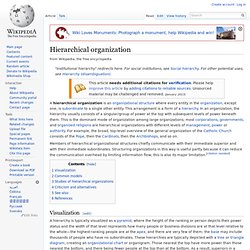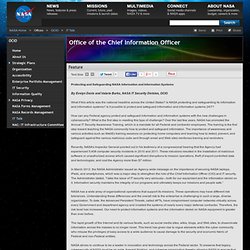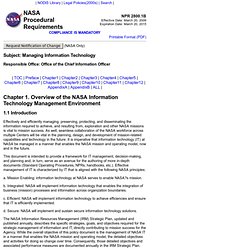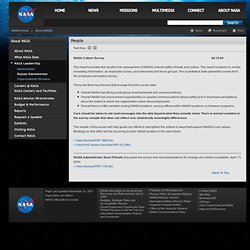

Nasachart. 57382main_culture_web.pdf. Fbi chart. Virtual Case File. Virtual Case File (or VCF) was a software application developed by the United States Federal Bureau of Investigation (FBI) between 2000 and 2005.

The project was officially abandoned in April 2005, while still in development stage and cost the federal government nearly $170 million. In 2006, the Washington Post wrote "In a 318-page report, completed in January 2005 and obtained by The Post under the Freedom of Information Act, [the Aerospace Corporation] said the SAIC software was incomplete, inadequate and so poorly designed that it would be essentially unusable under real-world conditions. Even in rudimentary tests, the system did not comply with basic requirements, the report said. It did not include network-management or archiving systems—a failing that would put crucial law enforcement and national security data at risk"[1] Origins[edit] Hierarchical organization. Members of hierarchical organizational structures chiefly communicate with their immediate superior and with their immediate subordinates.

Structuring organizations in this way is useful partly because it can reduce the communication overhead by limiting information flow; this is also its major limitation. [citation needed] Visualization[edit] Common models[edit] In modern post-feudal states the nominal top of the hierarchy still remains the head of state, which may be a president or a constitutional monarch, although in many modern states the powers of the head of state are delegated among different bodies. In business, the business owner traditionally occupied the pinnacle of the organization. Studies of hierarchical organizations[edit] The organizational development theorist Elliott Jacques identified a special role for hierarchy in his concept of requisite organization. Hierarchiology is the term coined by Dr. Criticism and alternatives[edit] See also[edit] References[edit] Investment Dashboard. Protecting and Safeguarding NASA Information and Information Systems. Protecting and Safeguarding NASA Information and Information Systems By Evelyn Davis and Valarie Burks, NASA IT Security Division, OCIO What if this article was the national headline across the United States?

Is NASA protecting and safeguarding its information and information systems? Is it possible to protect and safeguard information and information systems 24/7? How can any Federal agency protect and safeguard information and information systems with the new challenges in cybersecurity? Recently, NASA’s Inspector General pointed out in his testimony at a congressional hearing that the Agency had experienced 5,408 computer security incidents in 2010 and 2011.
In March 2012, the NASA Administrator issued an Agency-wide message on the importance of securing NASA laptops, iPads, and smartphones, which was a major step to strengthen the role of the Chief Information Officer (CIO) and IT security. NASA has a wide array of organizational operations that support its missions. NPR 2800.1B - Chapter1. Subject: Managing Information Technology Responsible Office: Office of the Chief Information Officer 1.1 Introduction Effectively and efficiently managing, preserving, protecting, and disseminating the information required to achieve, and resulting from, exploration and other NASA missions is vital to mission success.

As well, seamless collaboration of the NASA workforce across multiple Centers will be vital in the planning, design, and development of mission-related capabilities and technology in the future. It is imperative that information technology (IT) at NASA be managed in a manner that enables the NASA mission and operating model, now and in the future. This document is intended to provide a framework for IT management, decision-making, and planning and, in turn, serve as an avenue for the authoring of more in-depth documents (Standard Operating Procedures, NPRs, handbooks, etc.). A. B. C. NASA Culture Survey. NASA Culture Survey This report provides the results of an assessment of NASA's overall safety climate and culture.

The report is based on review of existing information, an employee survey, and interviews and focus groups. The quantitative data presented comes from the employee perception survey. There are three key themes that emerge from the survey data: Overall NASA has strong work-group level teamwork and communications. Chapter11.pdf.